Learnings from Nature: Evolution Favors Experimentation
What we can learn from nature's most transformative process
My name is Keegan Sentner, and I want to welcome you to Human Nature. This newsletter is a journey to rediscover our human connection to the natural world. This week, we’re diving into some of nature’s teachings highlighted by the film All That Breathes. Thanks for being here, friends. Enjoy.
A few weeks ago, I had the opportunity to attend a screening of the Oscar-nominated documentary film All That Breathes. The screening was immediately followed by a talk with Mohammed Saud and Nadeem Shehzad, the two lead rehabilitators in the film.
It was inspiring and surreal to get the opportunity to listen to these two individuals share their story of running Wildlife Rescue India in New Dehli. Throughout the panel, they discussed their different spiritual relationships with animals, shared some of their favorite stories, and compared their rehabilitation methods with the local wildlife hospital, Think Wild.
Having seen the film several times, it was a very strange feeling to be witnessing these two rehabilitators discuss their work, in of all places, Central Oregon. This proximity made me realize the interconnectedness within the world of conservation and how intertwined we are as humans on this planet.
As for the film, All That Breathes is a quiet film that lets you really sit with the ambiance of the wildlife hospital featured in the documentary. The documentary is both observant and poetic, letting the audience observe the contrast between the bustle of the city and the presence of wildlife. It’s a really beautiful story and includes some of the most breathtaking cinematography I’ve ever seen in a documentary, including the following shot, which is one of my personal favorites from the film.
Watching it for the third time, I was able to look a little deeper at the subtext of the film and discover some new elements I hadn’t previously noticed. In one of the scenes, Saud is feeding the black kites and describing their ability to survive in the bustling cityscape of New Delhi.
He speaks poetically, often in parables that inspire a deeper meaning, and in this scene, he quietly states, “Evolution favors experimentation.”
I hurriedly scribbled these words down in a little white notebook while sitting next to a few friends in the back row of the brewery screening. His words hit me like a ton of bricks. Saud’s subtle yet obvious statement about the nature of our existence and the foundation of evolution awakened something deeper inside of me, something I’ve carried with me for most of my life.
I’ve always been extremely fascinated with the idea of growth through the action of experimentation. I’ve understood life to be a medium to try new things, change paths, and appreciate different perspectives. In many ways, I believe this ability to experiment is the essence of freedom - to have a choice - and something that shouldn’t be taken for granted.
In the early years of obtaining my bachelor’s degree in wildlife biology, my ideas toward experimentation took on new meaning. For several semesters, I took different courses discussing the various mechanisms of evolution. These courses trained us to understand the reality of nature and how certain species came to exist. Throughout the class, we learned how to monitor species, document their life history, and search for clues to understanding current biology.
During these courses, I learned that evolutionary biology loosely defines experimentation as a chance occurrence or random event that influences the evolution of a species. In some cases, that’s a mutation that induces a species to possess a new trait, or sometimes, it’s a favorable behavior induced by environmental pressure applied by the outside world over several generations.
On the micro-level, nature doesn’t always favor these “experiments,” but over time, they are absolutely necessary for the continued survival of a species. In the natural world, nothing is static because complacency means death. The only chance of long-term survival is growth and adaptation.
Somewhere between these course lectures and the worksheets filled with phylogenetic trees, these ideas took on a new meaning in my mind - a philosophical one.
In nature, experiments lead to natural evolution. In life, the concept is the same. We may not have much ability to influence our biological evolutions, but we can certainly induce personal ones.
Nature helped me see that experimentation is more than just a way to approach life; it is a necessary mechanism for growth.
Now, not all of these experiments will lead to success. But, just as it is in nature, some of these attempts to innovate will help us develop a deeper understanding of our existence and discover new things about ourselves.
Throughout this newsletter, we’ll be applying this concept of evolution to our attempts to understand the human connection to the natural world. We’ll learn from nature’s processes and seek experiments that open our minds to discovering new ways of existing in the world.
The more pressure we can apply to our current perspectives, the more likely we will discover a new form of our existence - our next evolution.
As for Saud’s words in All That Breathes, he shared that black kites had evolved over generations to be able to eat and digest waste found in the outskirts of New Delhi. Once an experimental diet for the birds now was a way these creatures help control the trash and waste throughout the city. An evolution through experimentation that helped form an unlikely coexistence between nature and humanity. Sounds like something we could learn a thing or two from.
An Earned Form of Transportation
Yesterday marks the first anniversary of my first ultramarathon, a 55-kilometer romp through the wide-open Arizona desert outside of Lake Powell.
Throughout the last decade of my life, trail running has been the bridge between modern life and the natural world. It’s one of my favorite ways to escape the bustle of society and push myself to exist in our most natural form, as an animal traveling across the landscape.
At its core, the practice of trail running is one of the most primitive forms of play - no cars, planes, or trains - just our bodies pushing us forward across the various ecosystems that populate the wide-open land.
There is something about this form of travel that lets us access an ancestral and authentic connection with the planet.
The lack of technology and sole reliance on our bodies allows us to break down the barriers between humanity and nature. For a mere moment, we can come in contact with the power of the land, a humbling feeling that reminds us we are merely single specks of life careening across a vast wilderness.
This opportunity to feel the power of the land while trail running is one of the most humbling and intoxicating things I’ve ever had the opportunity to experience. It’s one of those acts that initiates something primal and authentic inside of you and reminds you what it feels like to truly be alive.
I’ve gotten to run across some incredible places while trail running, and every time, I find myself feeling closer to the beauty and power of our planet. Here are a few photos from my trip to Antelope Canyon before the race last spring; it is a truly remarkable landscape.
I’d love to hear how you’ve connected with places in the natural world in the community chat, available for the Naturalists, our paid subscriber community.
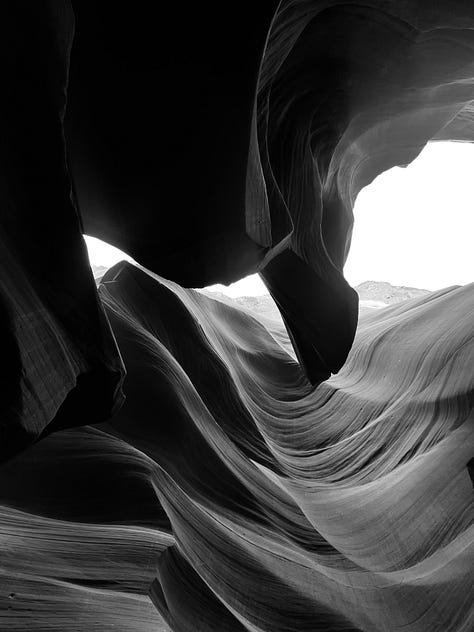
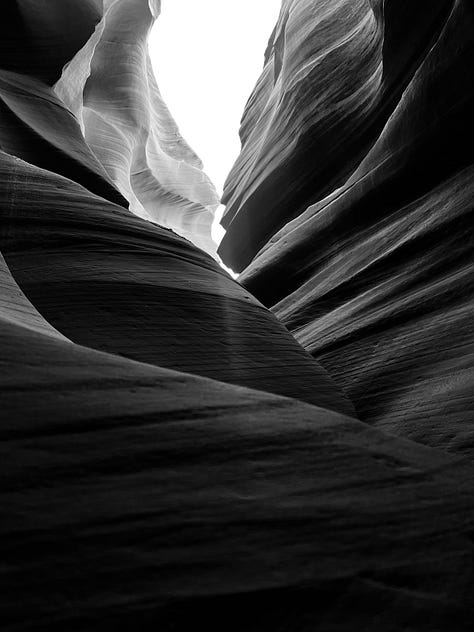
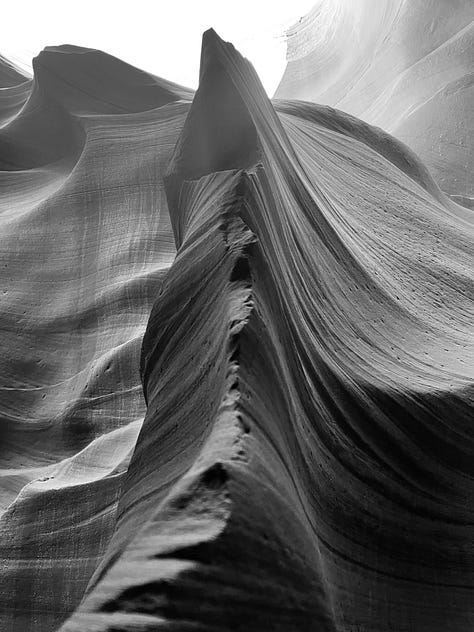


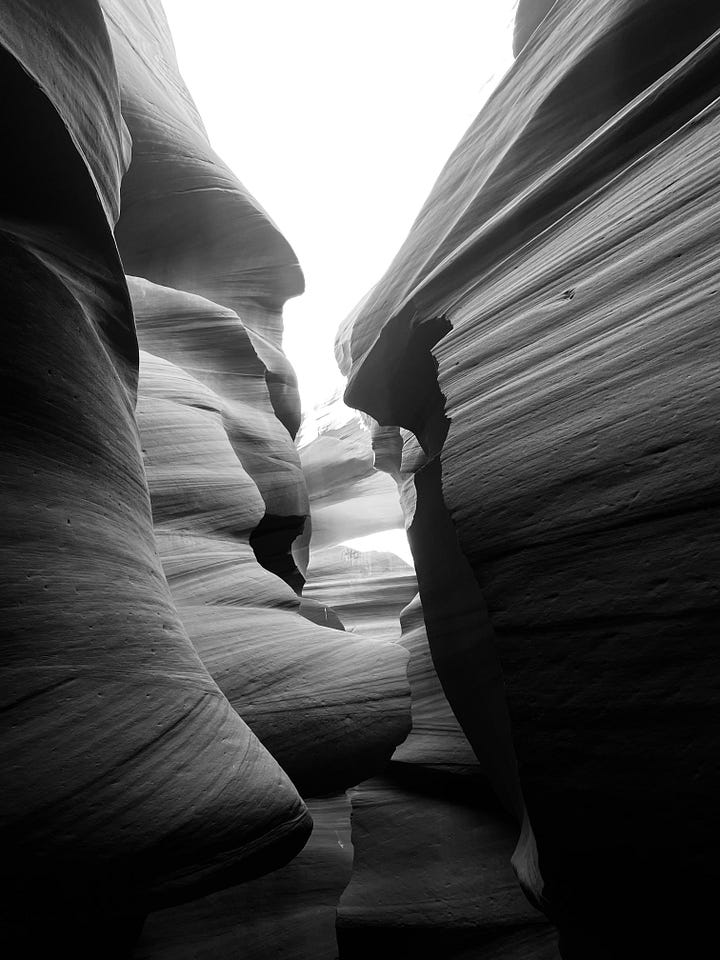
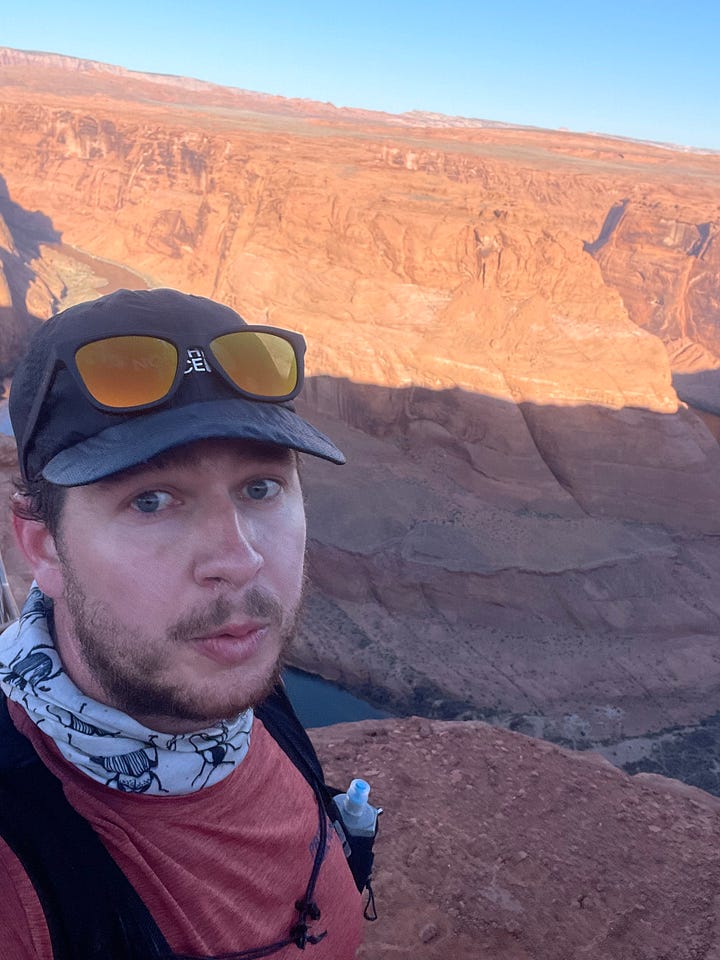
Thanks for being here, friends. See you in the next one.
With Love,
Keegan





